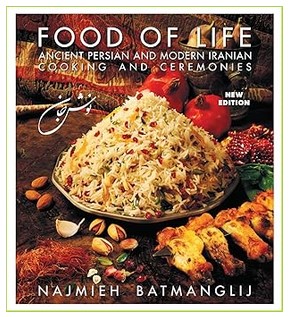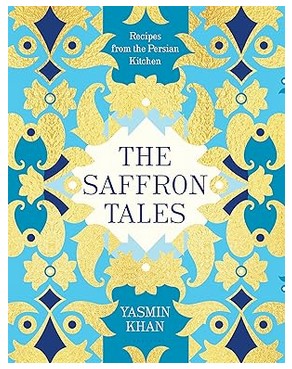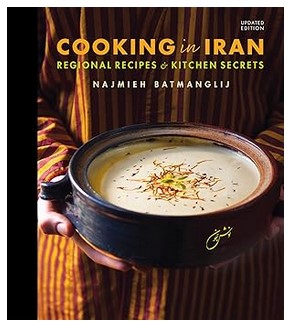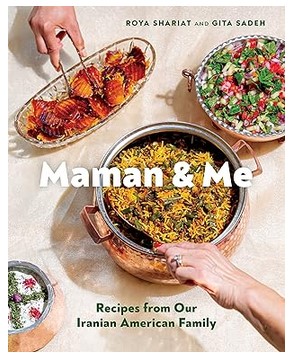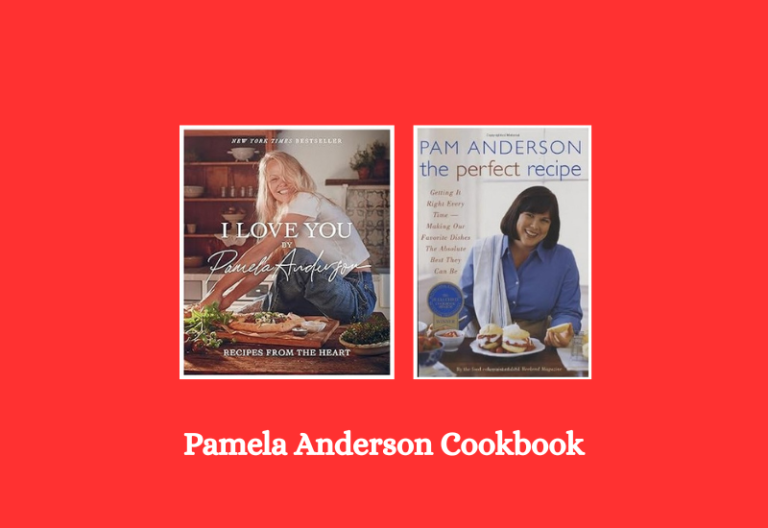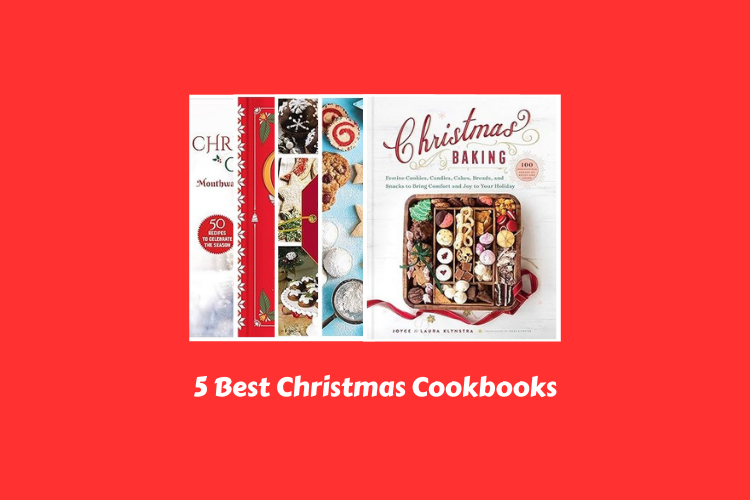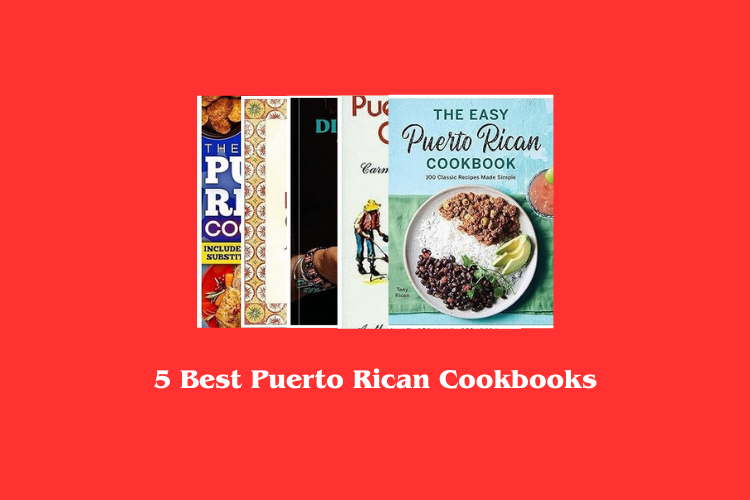5 Best Iranian Cookbooks [Recipes and Kitchen Secrets]
Iranian cuisine offers a rich blend of flavors, aromas, and history. Each dish tells a story of culture, tradition, and regional heritage. From fragrant saffron rice to tender stews and vibrant salads, these recipes bring warmth and color to any table.
Exploring Iranian cooking opens doors to unique ingredients such as pomegranate molasses, dried limes, and fresh herbs that elevate every meal. Home cooks and food enthusiasts find inspiration in authentic recipes passed down through generations, making every dish a culinary adventure.
These cookbooks provide clear instructions, helpful tips, and cultural insights that make cooking Iranian meals approachable and exciting. Spices, textures, and flavor combinations in these books allow anyone to experiment and enjoy a taste of Iran in their own kitchen.
Discovering these cookbooks introduces both traditional favorites and modern twists that will delight your taste buds and expand your cooking repertoire.
5 Best Iranian Cookbooks 2025
1.
Cookbook Overview
About the Author
Naz Deravian left Iran as a child during the 1979 Iranian Revolution. Her family moved from Iran to Rome and then to Vancouver. Along the way, they carried Persian poetry, saffron threads, and the memory of home through food. Naz now lives in Los Angeles and is an award-winning writer and passionate cook.
What the Cookbook Offers
Bottom of the Pot contains more than 100 Persian recipes. Each recipe adapts traditional dishes for an American kitchen. The cookbook blends flavors, stories, and culture, making Persian cooking accessible to anyone. Essays from Naz also explore the idea of home and memory through food.
Recognition
The book won the 2019 IACP First Book Award, presented by The Julia Child Foundation. Samin Nosrat, author of Salt, Fat, Acid, Heat, praised Naz for introducing Persian cooking to new audiences.
Recipe Categories
Rice and Tahdig
Rice forms the heart of many Persian meals. Tahdig, the golden crispy layer at the bottom of the pot, takes center stage. Recipes include simple basmati rice, saffron rice, and creative variations with nuts and herbs.
Stews and Main Dishes
Persian stews, known as aash and khoresh, mix meat, beans, vegetables, and dried fruits. Recipes like pomegranate walnut chicken, lentil stew, and herb-filled soups show the depth of Persian flavors.
Snacks and Sides
The cookbook includes salads, dips, and small bites. These recipes highlight fresh herbs, yogurt, and vegetables. Each dish complements main courses, offering balance and color to the table.
Desserts and Sweets
Persian desserts bring floral and sweet notes. Recipes feature rose petals, cardamom, and saffron. Readers can make simple treats like nut-filled cookies and syrup-soaked pastries.
Features
Cultural Stories
Naz weaves personal stories throughout the book. Readers learn about Persian traditions, her family’s journey, and the comfort food that shaped her childhood.
Simple Ingredients
Recipes use ingredients found in most grocery stores. Spices like saffron and dried limes bring authentic flavors without requiring rare items.
Step-by-Step Guidance
Instructions are clear and easy to follow. Each recipe includes tips for perfect texture and flavor. Photographs illustrate key steps and final dishes.
Home-Friendly Adaptation
Recipes adjust traditional Persian dishes for everyday cooking. They work for small families or dinner parties, making Persian cuisine practical for modern kitchens.
Inspiration and Creativity
Essays and notes inspire readers to explore flavors, mix ingredients, and enjoy cooking. Persian music, poetry, and traditions are paired with recipes, creating a complete cultural experience.
2.
Cookbook Overview
About the Author
Najmieh Batmanglij is a well-known expert in Persian cuisine. She started her cookbook series in 1986 and has spent over 30 years collecting and testing recipes. Her work began in exile after the Iranian Revolution of 1979 as a way to share Persian food with her children. Today, her books help anyone cook authentic Persian dishes in the American kitchen.
Edition Details
The 25th Anniversary Edition is fully redesigned for today’s cooks. It includes 330 recipes and hundreds of full-color photographs. The book explains Persian ceremonies, folktales, poetry, and travel experiences, giving readers a deep cultural experience.
This edition is more user-friendly and adds features like a vegetarian section, cooking temperature in Fahrenheit and Centigrade, and step-by-step photo guides.
Recipe Categories
Classical and Regional Dishes
Food of Life includes both traditional and regional recipes from across Iran. Readers learn to cook rice, stews, kebabs, and pastries using ingredients that are easy to find. The recipes adapt ancient Persian methods for modern kitchens.
Vegetarian Recipes
This edition introduces a vegetarian section. Most recipes now offer vegetarian options, making Persian cuisine accessible to all diets. It includes creative ways to combine vegetables, fruits, and herbs for flavorful meals.
Special Recipes
The book also features recipes from sixteenth-century Persian cookbooks. These classic dishes showcase centuries of Persian culinary tradition. Master recipes include step-by-step photos and tips for presentation.
Features
Full-Color Photography
Hundreds of photos show the finished dishes, cooking steps, and even Persian artwork. Readers get visual guidance to help them cook with confidence.
Ingredient Dictionary
The book includes a complete dictionary of Persian ingredients. It explains what each ingredient is, how to use it, and where to find it in stores or online.
Cultural Insights
Stories, poetry, and folktales enrich the cooking experience. Readers explore Persian history, art, and ceremonies alongside recipes.
Flexible Cooking
Recipes include options for oven or stovetop cooking. The book also encourages using seasonal and local ingredients, such as farmers market produce or home-grown herbs.
3.
Cookbook Overview
About the Author
Yasmin Khan, a British-Iranian cook, traveled across Iran to explore home kitchens. From snowy Tabriz to Tehran’s cafés and Isfahan’s pomegranate orchards, she collected recipes and stories. Her experience shows the daily life of Iranians and the secrets of Persian cooking.
Awards and Recognition
The Saffron Tales won the M.F.K Fisher Award for Excellence in Culinary Writing. It appeared on the New York Times, Wall Street Journal, and BBC Food Programme best cookbook lists. Critics like Nigella Lawson and Yotam Ottolenghi praised it for combining stories with mouthwatering recipes.
Book Highlights
This cookbook features over 80 modern Persian recipes. Beautiful photography from across Iran captures the country’s food, people, and landscapes. Every recipe comes with clear instructions, making it simple for home cooks to try Persian dishes.
Recipe Categories
Meat and Poultry Dishes
Recipes like fesenjoon (chicken with walnuts and pomegranates) and kofte berenji (lamb meatballs with prunes and barberries) show traditional flavors with fresh ideas.
Vegetarian Dishes
Vegetarian options include tahcheen (baked saffron and eggplant rice) and domaj (mixed herb, flatbread, and feta salad). Herbs, spices, and rice play central roles in these dishes.
Seafood Recipes
Ghalyieh maygoo (shrimp with coriander and tamarind) introduces Persian seafood cooking. Recipes are simple, flavorful, and use local ingredients.
Desserts
Persian sweets like rose and almond cake or sour cherry and dark chocolate cookies are part of the cookbook. These desserts combine subtle sweetness with traditional flavors.
Features
Cultural Stories
Each recipe includes stories from Iranian families. Readers learn about local customs, celebrations, and everyday life. This approach makes cooking feel personal and engaging.
Pantry Staples
Yasmin explains Persian ingredients such as barberries, dried limes, saffron, and pomegranate molasses. Instructions show how to use these flavors in home kitchens.
Photography
The book contains vibrant photos of food and Iran’s landscapes. They make recipes inspiring and easy to follow.
Accessibility
Recipes are clear and simple. Ingredients are mostly available outside Iran. Even beginners can enjoy Persian cooking with this cookbook.
4.
Cookbook Overview
Author Background
Najmieh Batmanglij spent years traveling across Iran to collect recipes. She cooked with local chefs, visited workshops, and studied traditional methods. Her deep understanding of regional cooking makes this book an authoritative guide.
Book Scope
The cookbook covers a wide range of Iranian cuisine, from the northern Caspian Sea region to southern coastal areas like Bandar Abbas. Each chapter reflects the unique flavors and ingredients of its region, giving readers an authentic taste of Iranian culinary diversity.
Visual Presentation
With over 400 photographs, the book captures both the cooking process and finished dishes. Readers can see step-by-step instructions, local ingredients, and the beautiful presentation of traditional meals.
Recipe Categories
Main Dishes
Najmieh includes classic Iranian meals such as lamb necks with yogurt, saffron, and candied orange peel, slow-cooked duck in pomegranate and walnut sauce, and spiced goat cooked overnight in Baluchistan. These dishes highlight regional ingredients and traditional cooking methods.
Seafood
Iran’s coastal regions inspire seafood recipes, like grouper in tamarind, cilantro, and garlic sauce or spicy fish with rice cooked in date juice. Each recipe reflects local flavors and ancient traditions.
Breakfast and Snacks
The book features unique breakfast items and snacks, including a duck-egg omelet with smoked eggplant and baby garlic. Readers can explore meals beyond lunch and dinner, enjoying traditional foods throughout the day.
Desserts and Sweets
Iranian sweets often combine fruits, nuts, and spices. Najmieh introduces desserts that use pomegranates, pistachios, and saffron, giving readers a taste of regional celebrations and everyday treats.
Features
Regional Insights
Every recipe comes with cultural context. Readers learn about the villages, markets, and regions where the dishes originated. This makes cooking a journey, not just a task.
Ingredient Guidance
Najmieh explains how and where ingredients are grown, including saffron in Khorasan, pomegranates in Yazd, and dates along the Persian Gulf. This helps readers understand the connection between land and flavor.
Practical Tips
The cookbook offers practical cooking advice. Techniques for slow-cooking, using spices, and preparing traditional Iranian bread are included. Even complex recipes become easier to follow.
Photographs and Step-by-Step Instructions
High-quality images guide readers visually, showing how dishes should look and how ingredients are combined. This is especially helpful for non-native cooks trying Iranian recipes for the first time.
Extensive Recipe Collection
With more than 250 recipes, the book provides variety. From everyday meals to special occasions, readers can explore the full spectrum of Iranian cuisine.
5.
Cookbook Overview
Authors and Inspiration
Roya Shariat and Gita Sadeh share family recipes that have been cherished for years. Their warmth and humor shine through the pages, making readers feel like they are cooking alongside them. The book captures the heart of Iranian-American home cooking.
Recipe Count
The cookbook includes 78 recipes. Each recipe comes with clear instructions and beautiful photographs. The layout helps readers follow along easily, even if they are new to Iranian cuisine.
Audience
This book works for beginners and experienced cooks. Fans of Roya and Gita from social media will enjoy the familiar style, while new readers will find the recipes approachable and fun.
Recipe Categories
Soups and Stews
Soups and stews form a core part of Iranian meals. Recipes like Chilled Yogurt and Herb Soup (Ab Doogh Khiar) and Split Chickpea Stew with Crunchy Potatoes (Gheymeh) show a mix of traditional and modern flavors. Sweet and Sour Pomegranate and Walnut Stew (Fessenjoon) adds unique taste to your dinner table.
Main Dishes
Main dishes focus on rice, vegetables, and meats. Crunchy Baked Saffron Rice with Chicken (Tahchin) highlights the importance of texture and flavor in Iranian meals. Rice with Tahdig, served in three ways, gives a crispy, golden crust that is a favorite in every household.
Desserts and Beverages
Desserts in this cookbook include Syrupy Semolina Cake (Cake-e Sharbati) and other sweet treats. Beverages complement meals with light and refreshing flavors. Vegetarian, vegan, and gluten-free options make these recipes accessible for many diets.
Features
Full-Color Photography
Each recipe comes with vivid, full-color photos. The pictures show both the ingredients and the finished dishes. This makes cooking easier and inspires readers to try new recipes.
Accessibility
Recipes are simple and use easy-to-find ingredients. Measurements and steps are clear, helping readers avoid confusion. Many recipes suit modern dietary needs without losing authentic flavor.
Unique Approach
The book celebrates Iranian cuisine in an American setting. Traditional dishes receive creative updates, making them fresh and exciting. Readers can enjoy familiar tastes with new twists that feel natural and inviting.
Final Thoughts
This cookbook brings the flavors of Iran straight to your kitchen. Recipes are easy to follow and include soups, stews, main dishes, desserts, and drinks. Full-color photos make cooking enjoyable and inspiring.
Many dishes are vegetarian, vegan, or gluten-free, giving options for different diets. Roya Shariat and Gita Sadeh share family traditions with warmth and humor, making cooking feel personal and fun. For anyone who wants to explore Iranian cuisine at home, this book ranks among the Best Iranian Cookbooks.


